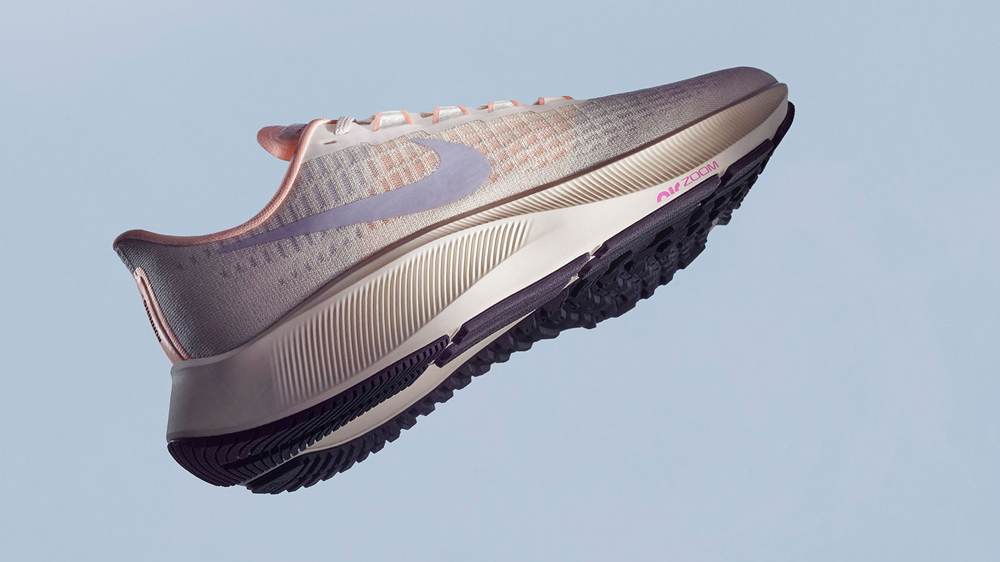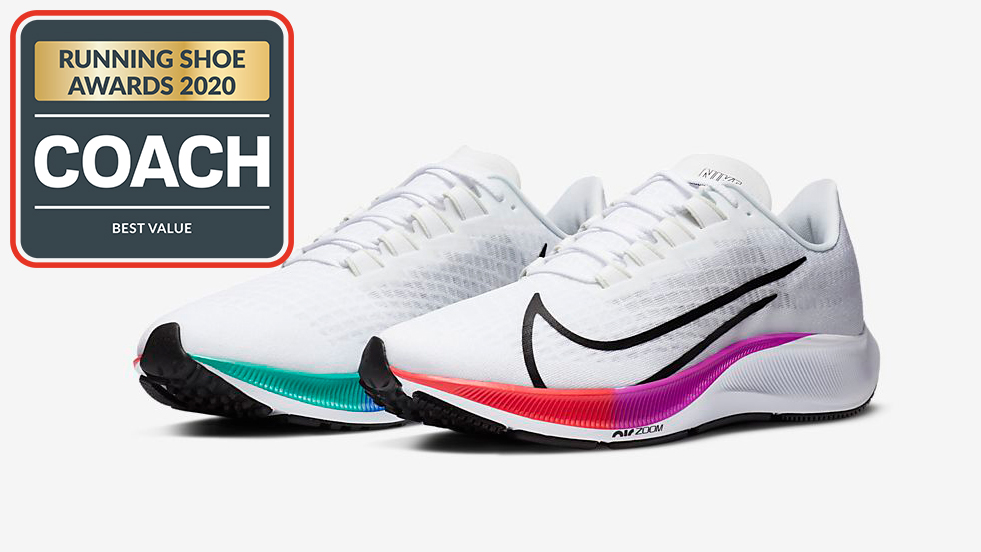You can trust Coach
The Nike Pegasus 37 is one of the most popular and enduring shoe lines in the world, as well as one of the best Nike running shoes, so of course there have been many changes to its design over its 37 years.
A post shared by Coach (@getcoach)
A photo posted by on
However, in the past few years it has started to feel a little stale. More importantly, the Pegasus began to fall behind the best running shoes from Nike and other brands.
In response, Nike has made significant updates for the 37th shoe in the Pegasus line, changing the main midsole foam to its React cushioning and increasing the size of the Air Zoom bag under the forefoot to create a more responsive, bouncy feel. These changes have hit the spot to the extent that the new Pegasus is once again one of the best all-round shoes out there – and at £104.95, it’s more affordable than the competition.
The Pegasus line is designed to handle all your running from easy efforts to racing and the 37 does a great job on that front. While committed runners will also want a faster, lighter shoe for speed sessions and races, if you’re someone who only has one running shoe on the go at a time, the 37 will work for everything.
I’ve logged around 80km in the shoe so far, including two 24km long runs, a tempo 10K and a few short, easy runs, and I’ve been impressed with the feel of the Pegasus 37 on all of them. I’ve enjoyed using Nike’s other shoes with React in the midsole, like the Epic React and Infinity Run, and the Pegasus 37 delivers a similar cushioned but quick ride.
That ride is improved by the Air Zoom bag in the forefoot, which livens up each stride and provides a bit more pop in your toe-off that you don’t get from shoes with just React foam.
The Pegasus 37 was particularly fun to run far in, especially at an easy to steady pace. It’s not excessively soft or plush – just a comfortable shoe. It would make a great half marathon or marathon shoe for most runners, though naturally falls well short of the performance of a dedicated racer like Nike’s Alphafly or the Saucony Endorphin Pro.
The Pegasus 37 can certainly handle the speedy stuff in your training, though. If you’re hitting the track or doing intervals regularly then a separate shoe for dedicated speed work would be beneficial, but the Pegasus 37 is good for tempo efforts and long progression runs finishing at a decent lick.
I found it better on that front than the Pegasus 36, even though it’s heavier. My UK size 9 Pegasus 37 weighs 287g compared with 271g for the 36, but the 37 definitely feels lighter when running thanks to the responsive cushioning underfoot.
The upper is a standard mesh job which I found comfortable and secure, and it’s breathable too. The shoe was true to size, with no rubbing around the toe box or slippage at the heel.
There’s a lot of rubber on the outsole of the shoe, which no doubt increases its weight but also means it’s likely to be durable and can cope with a variety of terrain. I found it a great shoe to use on light trails in the forest near me, during the summer at least.

Unusually, there’s a significant difference between the men’s and women’s version: the Air Zoom bag in the front is filled to a pressure of around 20PSI for the men’s shoe and 15PSI for the women’s. According to Nike, this is because female testers generally prefer a softer ride. The shoes don’t differ too much in other ways, aside from the colours available, so if you’re a man who prefers a softer ride or a woman who likes a firmer shoe, it might be best to switch to the shoe designed for the other sex. I only tested the men’s Pegasus 37, so can’t speak to the difference first-hand.
There are better all-round running shoes than the Pegasus 37 available, but they are a lot more expensive. The Nike Pegasus Turbo 2 is a little lighter and quicker, while still comfortable, and the New Balance FuelCell TC has a carbon plate and a big wedge of bouncy cushioning in the midsole that makes it superb for speedy and easy runs alike.
Both of those shoes cost more than £150, though, and I’d expect the Pegasus 37 to be the most durable of the three too. If I were looking for one shoe to use for everything and had a budget of around £100, I’d definitely pick the Pegasus 37.
Buy from Sports Shoes | £104.95

Nick Harris-Fry is a journalist who has been covering health and fitness since 2015. Nick is an avid runner, covering 70-110km a week, which gives him ample opportunity to test a wide range of running shoes and running gear. He is also the chief tester for fitness trackers and running watches, treadmills and exercise bikes, and workout headphones.

